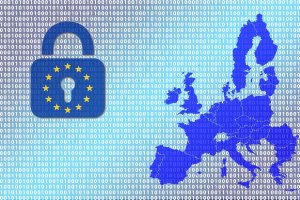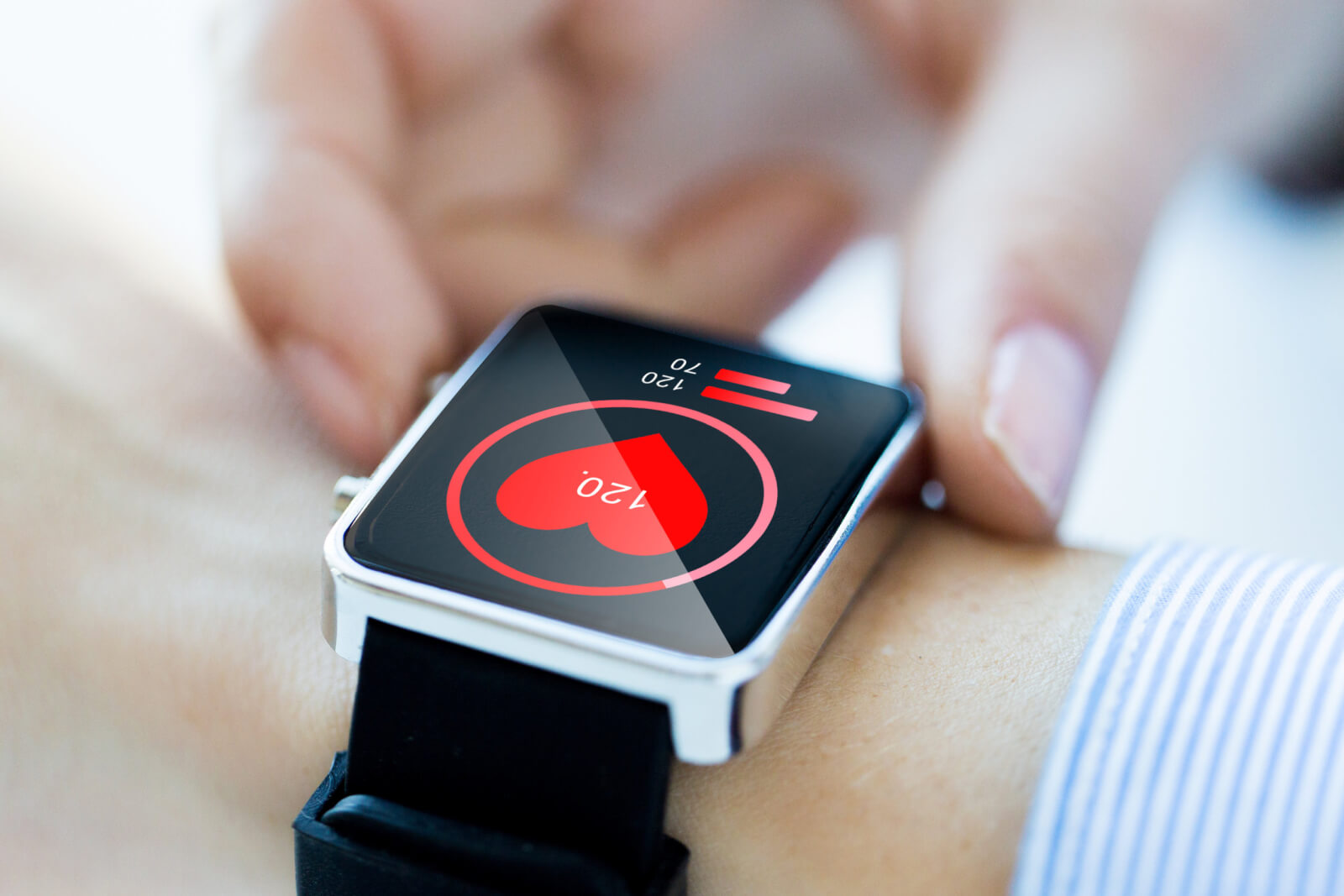- Ethical apps earn customer loyalty: 75% of consumers won’t purchase from a business they don’t trust with their data. In today’s market, prioritizing privacy and security is essential to retaining users and staying competitive.
- Privacy by design is now the norm: Forward-thinking companies embed privacy and security into app architecture from day one – using data minimization, transparency, and consent to meet rising regulatory and user expectations.
- Unethical practices carry heavy costs: Data misuse leads to reputational damage, regulatory fines (over €2 billion in EU fines in 2023), and lost business. High-profile scandals show that betraying user trust can sink a brand’s credibility overnight.
Why Ethical App Development Is a Business Priority
In 2025, ethical app development – designing software with user privacy, security, and transparency at the forefront – has evolved from a “nice-to-have” to a critical business priority. High-profile data breaches and privacy scandals have made users more protective of their personal information than ever. A recent Cisco Consumer Privacy Survey revealed that three out of four consumers will refuse to use or buy from companies they don’t trust with their data. In other words, if your app mishandles data or feels “creepy” in its data collection, users will walk away to a competitor. Trust has become a competitive differentiator – one that directly impacts customer acquisition and retention.
Regulators around the world are also raising the stakes. More than 120 countries now have data protection laws on the books, from Europe’s GDPR and California’s CCPA to newer regulations in Brazil, India, and elsewhere. Enforcement is ramping up: in 2023, GDPR fines hit a record high, including a €1.2 billion fine against Meta (Facebook) for privacy violations.
In the U.S., the FTC issued a landmark $5 billion penalty against Facebook in the wake of the Cambridge Analytica scandal. These actions signal that businesses face massive legal and financial consequences for unethical data practices. But beyond fines, the damage to reputation and user trust can be irreparable. After the Cambridge Analytica incident, public trust in Facebook’s commitment to privacy plummeted from 79% to just 27% – a clear warning that users punish companies who violate their privacy.
Equally important, users themselves are demanding ethics and privacy. Surveys show that a majority of internet users feel companies aren’t transparent about how they use data, and nearly half have stopped using a service due to privacy concerns. On the positive side, users reward ethical behavior: when companies are open about data use and protect information, consumers are more willing to share data to improve services.
In one study, 58% of users said they’re comfortable sharing personal info if it’s used in a transparent and beneficial way. This suggests that businesses who prioritize privacy can actually strengthen customer relationships and unlock more value – whereas those who cut corners on ethics will steadily lose trust, and with it, their competitive edge.
In summary, ethical app development isn’t just about avoiding harm – it’s a proactive business strategy. By building apps that respect users, you cultivate loyalty, mitigate legal risks, and differentiate your brand. The following sections will explore core privacy principles and best practices to help your business achieve these goals.
Core Principles: Data Minimization, Transparency, and Consent
To build user trust, app developers should adhere to several privacy-focused principles throughout the development process. The foundation of ethical design rests on data minimization, transparency, and user consent (along with giving users control over their data). These principles align with legal requirements and industry best practices, and they form the bedrock of frameworks like GDPR’s “privacy by design and default.” Let’s break down each principle:
Data Minimization
 Data minimization means collecting and keeping only the data that is truly necessary for your app’s purpose. Instead of vacuuming up every bit of user information “just in case,” an ethical app developer asks: Do we really need this data? If the answer is no, don’t collect it. By minimizing data collection and retention, you reduce the potential harm to users (and your business) in the event of a breach or misuse. In fact, the GDPR explicitly requires that personal data be “adequate, relevant and limited to what is necessary” for the purposes at hand.
Data minimization means collecting and keeping only the data that is truly necessary for your app’s purpose. Instead of vacuuming up every bit of user information “just in case,” an ethical app developer asks: Do we really need this data? If the answer is no, don’t collect it. By minimizing data collection and retention, you reduce the potential harm to users (and your business) in the event of a breach or misuse. In fact, the GDPR explicitly requires that personal data be “adequate, relevant and limited to what is necessary” for the purposes at hand.
In practice, data minimization might involve limiting app permissions to only those absolutely required (for example, not requesting access to contacts or location unless the feature truly needs it). It also means anonymizing or deleting data once it’s no longer needed. The benefits are twofold: users feel safer knowing you’re not stockpiling their information, and your exposure in a data breach or audit is much lower because you simply don’t have as much sensitive data at risk.
Ethically, this principle shows respect for user privacy – you’re saying “we value your data, so we won’t take more than we need.” And as a business, it forces you to be thoughtful and efficient in your data strategy, which often leads to leaner, more secure systems by design.
Transparency
Transparency is about being open and honest with users about what data you collect, why you need it, and how you use and share it. This principle combats the notorious “fine print” problem – those lengthy, opaque privacy policies that users rarely read. An ethical app turns that around: it communicates clearly at appropriate times about its data practices. Key ways to implement transparency include:
- Clear privacy policies: Write your privacy policy in plain language, and make it easily accessible (not buried in legalese). Spell out what information you collect and for what purposes. For example, if you collect email addresses for an account, explain if they’ll also be used for marketing or shared with partners.
- Just-in-time notices: Where possible, inform users at the moment of data collection. Modern mobile platforms encourage this; for instance, iOS permission dialogs force apps to explain why they want access to sensitive data like location or microphone. Use these prompts to be honest about your reasons.
- Transparency reports and dashboards: Some apps now offer privacy dashboards where users can see what data has been collected or how it’s been used. While not every app will need a full dashboard, providing avenues for users to inquire about their data can reinforce trust.
 Earning trust through transparency is crucial because currently many consumers feel kept in the dark. A recent survey found 63% of internet users believe most companies aren’t transparent about data use, and this lack of openness has real consequences – 48% have stopped doing business with a company due to privacy concerns. Don’t let your app become part of that statistic. By proactively communicating and avoiding misleading practices (like pre-ticked consent boxes or vague privacy settings), you demonstrate that your business has nothing to hide.
Earning trust through transparency is crucial because currently many consumers feel kept in the dark. A recent survey found 63% of internet users believe most companies aren’t transparent about data use, and this lack of openness has real consequences – 48% have stopped doing business with a company due to privacy concerns. Don’t let your app become part of that statistic. By proactively communicating and avoiding misleading practices (like pre-ticked consent boxes or vague privacy settings), you demonstrate that your business has nothing to hide.
This honesty goes a long way in establishing a positive reputation. In industries with sensitive data – for example, in healthcare app development – transparency is even more critical. Patients and providers need to know that an app handling private health information follows regulations and ethical guidelines. (For an in-depth look at privacy considerations in medical apps, see Dogtown Media’s Ultimate Healthcare App Development Guide, which covers compliance with standards like HIPAA and the importance of protecting patient data.)
User Consent and Control
Obtaining user consent is a fundamental ethical (and often legal) requirement whenever your app collects personal data beyond what’s strictly necessary. Consent means the user has a genuine choice – they understand what they’re agreeing to and can say yes or no without coercion. From an implementation standpoint, this involves practices like:
- Ask permission for data collection: Use clear opt-in dialogs for things like location tracking, contact uploads, use of camera/microphone, etc. For web apps, comply with cookie consent laws by letting users choose which data to allow (especially for tracking or advertising cookies).
- Granular consent options: Whenever feasible, let users consent to some things and not others. For example, a fitness app might request health data for core functionality but separately ask if it can use that data for research or personalized ads. Avoid bundling all permissions into one “all-or-nothing” checkbox.
- No dark patterns: Don’t design consent prompts that trick or pressure users (for instance, making the “Agree” button big and a “Learn More” link tiny, or repeatedly nagging those who decline). Respect the user’s decision if they opt out.
Just as important as getting consent is giving ongoing control. Ethical apps treat privacy not as a one-time formality at install, but as a continuous user right. This means providing easy ways for users to review and revoke permissions or delete their data. For example, include settings where users can toggle off certain data collection (like turning off personalized ads, or disabling location tracking for non-essential features). Allow users to delete their account or personal data from your systems without undue hurdles. In some jurisdictions, you’re legally obligated to do this, but even if not mandated, it’s a best practice that shows respect for user autonomy.
By prioritizing consent and control, you build a partnership with your users. They are far more likely to trust an app that gives them agency over their information. In fact, privacy research indicates that 92% of customers appreciate companies giving them control over what information is collected and how it’s used. Conversely, feeling powerless erodes trust: large majorities of people say they feel they have little or no control over the data companies collect.
The message for business owners is clear – empower your users to make choices about their data. Not only does this keep you on the right side of regulations, it also fosters goodwill. A user who can easily opt out of a feature and keep using your app (rather than being forced to consent or leave) is a user who feels respected and is more likely to remain loyal.
In summary, embedding data minimization, transparency, and consent into your app’s DNA is the cornerstone of ethical development. These principles work in harmony: you collect less data, you’re upfront about everything, and you ensure the user is in the driver’s seat. Next, we’ll look at how to implement these values through concrete practices like secure architecture design, privacy-by-design processes, and responsible AI integration.
Privacy-by-Design and Secure App Architecture
Embracing privacy-by-design means weaving privacy and security considerations into every stage of your app’s development, from initial concept through deployment and updates. Rather than treating privacy as an afterthought or a box to check for compliance, you make it a guiding philosophy. This approach was popularized by former Ontario Privacy Commissioner Ann Cavoukian’s seven principles of Privacy by Design, and it’s now codified in laws like GDPR. In practical terms, what does privacy-by-design look like for a business owner overseeing app development? Here are some best practices for building a secure, privacy-first architecture:
- Conduct privacy risk assessments early: Before writing a single line of code, identify what personal data your app will handle and map out the “data flows.” Ask where data is stored, who can access it, and what could go wrong if it’s misused or exposed. By performing a privacy impact assessment (PIA) or similar review upfront, you can spot potential issues (e.g., an API that returns more user info than needed) and mitigate them in the design. This upfront investment is far easier than refactoring a product late in the game to fix privacy flaws.
- Secure architecture from the ground up: Make robust security practices a foundational part of your app’s architecture. This includes using encryption for data at rest and in transit, enforcing strict access controls, and following secure coding standards to prevent common vulnerabilities. For instance, sensitive user data (passwords, personal details) should be stored encrypted (using strong algorithms like AES-256) and transmitted only over secure channels (TLS/SSL). Implement authentication and authorization checks on every relevant layer – client, server, and API – so that users (and other systems) only access what they’re permitted to. Adopting a “security by design” mindset alongside privacy-by-design is crucial; as Dogtown Media emphasizes in its guide on Securing Your Mobile App’s API, embedding security from day one can prevent breaches that lead to data theft, financial loss, and reputational damage.
- Follow the principle of least privilege: Design systems such that each component (or employee, or third-party service) has only the minimum access necessary to perform its function. If your app uses a cloud database, not every microservice or developer account needs full read/write access to all tables. Limit credentials, use role-based permissions, and segment data to contain what could be exposed if one part is compromised. Least privilege dovetails with data minimization – you’re limiting access as well as collection.
- Regularly test and audit security: Ethical development acknowledges that no system is ever “done” with security. Set up a schedule for penetration testing, code reviews focused on security, and audits of your data practices. Utilize tools to scan for vulnerabilities in code and dependencies. Consider inviting third-party security firms to do audits or even offering a bug bounty program to get security researchers to responsibly disclose issues. Also, monitor your systems actively – intrusion detection systems, logging, and alerting can catch suspicious activity early. Being proactive here not only protects your users but also shows them you’re serious about safeguarding their data.
- Ensure compliance through design: Integrate compliance requirements (GDPR, HIPAA, etc.) into your system requirements from the start. For example, GDPR mandates data storage limitation – you might build a feature to automatically purge or anonymize records after a certain retention period. Likewise, to comply with user data access or deletion requests, you’ll need an architecture that can retrieve or remove all user-related data efficiently. Designing for these capabilities upfront is far easier than retrofitting them later. If you operate in healthcare, for instance, your architecture should incorporate HIPAA safeguards (encryption, audit logs, access controls, backup recovery plans) by default. Neglecting these in a healthcare app not only risks patient privacy but also legal action. (For more insights on building secure healthcare apps, you can refer to Dogtown Media’s article on security considerations for healthcare app development, which covers encryption, access control, and other best practices specific to medical data.)
By implementing these measures, privacy and security become an integral part of your app’s architecture and workflow, not a bolt-on feature. This approach has tangible benefits: studies show that organizations with mature privacy-by-design programs experience lower costs in breaches and downtime. Moreover, a secure architecture underpins user trust – even if users don’t see the encryption or threat modeling happening behind the scenes, they will notice the outcome (i.e., your app isn’t in the news for leaks or hacks, and it behaves in a trustworthy way).
An often overlooked aspect of privacy-by-design is training and culture. Ensure your development team (and any third-party contractors) are educated on secure coding and privacy principles. Establish internal guidelines or checklists for developers to follow (for example, “Any new feature must document what data it collects and why, and go through a security review before release”). By building a culture that values ethical considerations, you make it far more likely that potential problems are caught and addressed early, not swept under the rug.
In summary, privacy-by-design and secure architecture mean baking protection into the very recipe of your app. It’s analogous to building a house with a strong foundation and locks on every door, rather than trying to patch cracks and add locks after burglars have already been by. The payoff for businesses is substantial: not only do you reduce the risk of costly breaches, you also create a product that users feel safe using. And a user at ease is more likely to engage deeply, share data consciously, and become an advocate for your app – all of which is good for business.
Responsible AI Integration and Ethical Data Use
Many modern apps incorporate artificial intelligence (AI) and machine learning – from personalized recommendations and chatbots to predictive analytics. While AI can greatly enhance user experience and business value, it also introduces new ethical challenges. As a business owner integrating AI into your app, it’s crucial to ensure responsible AI practices that uphold user privacy and avoid betraying trust. This means addressing concerns around data usage, bias, transparency, and accountability in AI systems.
Privacy and data usage
AI systems often feed on large amounts of user data to learn patterns. It’s vital to apply the same principles of minimization and consent here. Only use data that you have permission to use, and consider techniques like anonymization or aggregation so that AI models don’t expose individual users’ data.
For example, if your app uses AI to recommend new products to users, you might train that algorithm on generalized usage data rather than sensitive personal details. Avoid the temptation to scrape extra data “because AI needs as much as possible.” In fact, privacy-enhancing technologies like federated learning are emerging, which allow AI models to train on user data without that data leaving the user’s device – a win-win for privacy and learning capability. Whenever feasible, favor such approaches that preserve privacy by design in AI pipelines.
Bias and fairness
Ethical AI integration requires vigilance against biases that can creep into algorithms and lead to unfair or discriminatory outcomes. If your app’s AI is making decisions – like lending decisions in a fintech app or content moderation in a social app – ask whether certain user groups could be adversely affected. It’s important to audit AI models for bias and ensure your training data is representative and free from prejudiced labeling.
From a privacy standpoint, also be mindful of using sensitive attributes (race, gender, health info) in AI models; unless absolutely necessary (and consented to), such data should be excluded to reduce the risk of biased outcomes and privacy violations. Responsible AI teams often include ethicists or at least a review process to evaluate the societal impacts of an AI feature. As a business leader, fostering this kind of review shows you are looking beyond just functionality – you care about the fairness and ethics of your AI’s behavior.
Transparency in AI decisions
Users should not feel that your app’s AI is a “black box” mysteriously making decisions about them. Explainability is key. Whenever an AI-driven feature has a significant effect on a user (for instance, an AI-based credit scoring, or even a personalized content feed), provide some level of explanation or context. This might be as simple as, “Recommended because you liked X,” in a media app, or a more detailed explanation in a healthcare app on how an AI arrived at a risk assessment.
Transparency in AI not only helps users trust the feature, but it also helps them correct any wrong inputs (“Oh, it’s recommending this because it thought I liked something else – maybe I need to adjust my profile”). Moreover, regulators are moving toward requiring AI transparency (the proposed EU AI Act would mandate certain disclosures), so getting ahead on this is wise. Surveys show that over 50% of users want companies to be clear when they’re using AI in services – hiding the fact that a decision was automated can backfire if users feel deceived.
Addressing AI-related privacy concerns
Notably, the rise of AI has sparked new privacy worries among consumers. A significant portion of users are uneasy about how companies might be using AI on their personal data. In fact, 60% of consumers are concerned about businesses’ use of AI, and 65% feel it has already eroded their trust in companies. This sentiment means businesses must tread carefully and conscientiously. If you’re deploying generative AI or machine learning in your app, communicate how you’re using it responsibly.
For example, if you use AI to analyze user behavior, explicitly state that analysis is done to improve the service, that data is kept secure, and that users can opt out if possible. Internally, establish guidelines like not feeding confidential or personally identifiable information into third-party AI tools without proper safeguards. (There have already been cases of employees inadvertently leaking sensitive data by using cloud AI APIs without caution.)
Human oversight and accountability
Responsible AI doesn’t mean AI runs on autopilot with no human in the loop. Determine where human oversight is needed. For critical functions (like a health app’s AI diagnosing conditions), maintaining a qualified human check on the AI’s output can be essential for safety and liability. Make clear to users how to reach a human or appeal a decision if they believe the AI got it wrong. Setting up processes for handling such cases demonstrates accountability. As AI ethicists often say, responsibility cannot be delegated to algorithms. Your company is still accountable for what the AI does. Having an escalation path and fallback to human judgment is part of ethical AI governance.
By implementing these practices, you can harness AI’s benefits without sacrificing user trust. When done right, AI can even enhance privacy – for example, AI-powered security systems can detect fraud or breaches faster, protecting user data. But done recklessly, AI integration can appear intrusive or unfair. Strive to make your AI explainable, fair, and user-centric. In the long run, this will pay off: users are more likely to embrace and even be impressed by AI features if they see them as augmenting their experience rather than exploiting their data. Companies leading in this space often openly publish their AI ethics principles and invite external audits, which could be a consideration as your use of AI matures.
Consequences of Unethical Practices
What happens if you ignore ethical app development? The real-world consequences can be severe, impacting both your bottom line and your brand’s survival. It’s important for business owners to understand the full scope of risks that come with careless data practices or security neglect:
- Regulatory penalties: As discussed earlier, regulators worldwide are cracking down on privacy violations. The fines are not trivial – they can be business-ending for many companies. To recap just a few examples: GDPR fines in the EU have soared to record levels, with around €2.1 billion in fines issued in 2023 alone. Big tech firms have been hit with headline-making penalties (Meta’s €1.2B fine in 2023 for mishandling EU user data, Amazon’s €746M fine in 2021, etc.), but small and mid-sized businesses are not immune. Regulators enforce rules across industries – if a mobile app is found violating children’s privacy laws, or a healthcare app isn’t adequately protecting patient data, fines and sanctions can follow. In addition to government penalties, violations can lead to class-action lawsuits or settlements. For instance, ride-sharing company Uber had to pay $148 million to U.S. states in a settlement over a data breach cover-up, and many companies have faced multi-million dollar class settlements for tracking users without consent. Simply put, unethical practices can cost far more in the long run than investing in privacy and security upfront.
- Reputation and loss of user trust: Monetary fines aside, the damage to your brand’s reputation can be irreparable after a privacy scandal. Users today are quick to react – and thanks to social media, bad news travels fast. A single misstep (like discovering your app quietly uploaded users’ address books, or leaked personal photos due to poor security) can ignite public outrage. Trust, once broken, is hard to rebuild. We saw this with Facebook: the Cambridge Analytica scandal led to a massive erosion of user confidence (a survey showed trust in Facebook’s commitment to privacy dropped by over 50 percentage points). Many users deleted accounts or reduced usage in protest. For a business owner, losing your users’ trust means losing customers, period. It can also scare off potential new users who hear of your troubles. And it’s not just consumer apps – if you’re building enterprise or B2B apps, client companies will think twice about using a product with a poor privacy/security track record. On the flip side, companies known for protecting privacy (like Apple positioning itself as privacy-friendly) often enjoy strong customer loyalty and even market advantage. The stakes are especially high in sectors like finance or healthcare, where a breach of trust can literally be life-or-death (imagine a mental health app exposing user journals – the harm is immeasurable and the public backlash enormous).
- Direct financial costs of breaches: Unethical practices such as skimping on security can lead to data breaches, and breaches come with direct costs beyond fines. The global average cost of a data breach reached $4.45–4.88 million in 2023-2024 – an all-time high. This figure includes investigation and remediation expenses, downtime losses, customer notification costs, credit monitoring for affected users, and so on. For small companies, a serious breach can be an extinction-level event, draining resources and driving customers away. Even for larger companies, multi-million dollar hits and years of litigation are a heavy toll. Unethical shortcuts (like not encrypting data or ignoring security updates) often directly cause these breaches. It’s sobering to realize that the fallout of a single incident could easily exceed what a robust security program would have cost in the first place.
- Employee and partner fallout: Another consequence sometimes overlooked is internal morale and partnerships. If your company develops a reputation for unethical tech practices, you might struggle to attract and retain talent. Today’s software professionals, especially younger generations, place a high value on doing meaningful, responsible work. Many developers do not want to be associated with a product that is infamous for harming users or playing fast and loose with data. You could see increased turnover or difficulty hiring skilled people. Similarly, business partners and investors might distance themselves. Large platform providers (like Apple and Google) might remove or restrict your app if it violates policies – for example, apps caught secretly collecting data have been kicked off app stores, cutting off their distribution. Advertisers and integration partners might also sever ties if your app is labeled a privacy risk. In essence, unethical behavior can isolate your business ecosystem, making it hard to operate.
In short, the cost of unethical app development is far greater than any savings from cutting corners. The real world has shown time and again that deception, neglect, or irresponsibility in tech lead to disaster – whether it’s a shattered user base, multi-billion-dollar fines, or CEOs testifying before Congress in damage-control mode. On the positive side, the converse is also true: the benefits of doing the right thing are tangible. Companies that champion privacy and security find that it bolsters their brand, attracts conscientious customers, and often keeps them safely out of regulators’ crosshairs. By learning from the cautionary tales of others and prioritizing ethics, you protect not only your users but the longevity and integrity of your business.
Building Trust by Design
Ethical app development is no longer optional – it’s a baseline expectation from users, regulators, and the market at large. By prioritizing user privacy and data protection at every step, businesses can build a foundation of trust that becomes a long-term competitive advantage. We’ve discussed how core principles like data minimization, transparency, and user consent create a respectful and open relationship with your users. We’ve also outlined best practices – from secure architecture and privacy-by-design processes to responsible AI integration – that turn those principles into concrete actions in your app development lifecycle.
The key takeaway is that privacy and security should be treated as fundamental features of your product, not afterthoughts. Just as you invest in good design or functionality, investing in ethics and trustworthiness will pay dividends. Apps built with these values not only avoid the costly pitfalls of breaches and legal troubles, but also engender loyalty – users are more likely to stick with a service they feel respects them and safeguards their information. In a landscape of ever-increasing cyber threats and savvy consumers, trust is arguably one of the most important assets a company can cultivate.
For business owners, fostering an ethical approach means setting the tone from the top. It involves training your teams, allocating budget and time for privacy and security measures, and constantly staying updated on emerging risks and regulations. It might seem daunting, but resources abound – from industry guidelines to services that can help with compliance and security audits. And you don’t have to sacrifice innovation for ethics; in fact, many of the world’s leading tech companies have shown that you can be both cutting-edge and privacy-centric, using creativity to solve the very challenges of building secure, privacy-preserving technologies.
In conclusion, ethical app development is about putting users first – treating their data and privacy with the same care and respect that you would want for your own. When users sense that commitment, they reward you with trust, engagement, and loyalty. In contrast, if they sense indifference or deceit, no amount of clever features will win them back. By building ethics into your apps by design, you are ultimately building a brand that people can trust. And in today’s digital economy, that trust is the cornerstone of lasting success.
FAQ: Common Questions from Business Owners
Q: How can I audit my app’s privacy practices to ensure it’s compliant and ethical?
A: Start by mapping all the personal data your app collects, processes, and stores. Document where that data comes from, where it flows (e.g., third-party APIs, analytics platforms), and who has access to it. With this data inventory in hand, you can perform a privacy audit or assessment.
Check each data type against regulations and best practices: Do you have a clear user consent for this data? Is its collection necessary (data minimization)? Is it stored securely (encrypted, access-controlled)? A good approach is to use a compliance checklist for relevant laws – for instance, GDPR requires certain user rights and protections, HIPAA has specific controls for health data, etc.
You may want to bring in a third-party security/privacy firm to do a thorough audit or even a penetration test for security. They can identify hidden vulnerabilities or compliance gaps that an internal team might miss. Additionally, review your privacy policy and UX: ensure they accurately reflect your practices (no surprises for the user) and that your in-app privacy settings, permissions, and prompts are functioning as intended.
Regular audits – annually or whenever you make significant changes – will help catch issues early. Essentially, an audit is about verifying that you practice what you preach in terms of privacy. Many companies also appoint a Privacy Officer or champion to continually monitor and improve data practices. Tools like data mapping software, consent management platforms, and privacy impact assessment templates can be very helpful in this process.
Q: What are the benefits of prioritizing user trust and privacy for my business?
A: Prioritizing user trust isn’t just a moral choice – it delivers tangible business benefits. First and foremost, it builds a loyal user base. When customers know that your app respects their privacy and secures their data, they are more likely to engage deeply and stick around. Trust can even trump other factors like features or price; for example, surveys have found a significant portion of consumers would rather use (or even pay more for) a service they trust with their data over one they don’t.
Second, a strong privacy reputation is a competitive differentiator in crowded markets. It can be a selling point in your marketing – and it helps you stand out as a reputable brand. We’re already seeing companies advertise privacy as a feature. Third, focusing on privacy and security reduces the risk of costly incidents.
You’re less likely to suffer a major breach or compliance penalty, which means avoiding those massive costs we discussed (which can include lost revenue during downtime, legal fees, and customer churn following an incident). Think of it like an insurance policy: the better your preventive measures, the less likely you’ll pay out later. Fourth, trust opens doors for innovation. If users trust you, they are more willing to opt in to new features or share data that can help you improve the product.
For instance, a user who might balk at sharing their location or health metrics with a random app might be willing to do so with an app that has proven trustworthy – enabling you to offer more personalized and valuable services. Finally, prioritizing trust boosts brand value and goodwill. It turns customers into advocates; they’re more apt to recommend your app to friends or give positive reviews if they feel you have their best interests at heart. In summary, investing in privacy and trust is investing in a foundation for long-term growth, resilience, and customer loyalty.
Q: Will emphasizing privacy and security slow down my app’s development or add excessive costs?
A: It’s a common concern that building in a lot of privacy and security might bog down development or be expensive. In practice, while there is an upfront investment, it pays off by preventing far greater costs later. Think of privacy and security work as you would quality assurance or testing – it’s part of doing the job right. Yes, taking the time to do threat modeling, code reviews, or compliance checks means you might spend a bit more effort in development.
And using top-notch security tools or hiring experts has a cost. However, these should be seen as essential components of the project, not optional add-ons. Many tools and frameworks today actually make it easier and faster to build secure, compliant apps – for instance, there are libraries for encryption, platforms that handle consent management, and templates for privacy-centric design.
By using established best practices and components, you often save time that would otherwise be spent patching issues or reinventing the wheel. Moreover, when privacy/security is a clear priority, teams tend to integrate it into their workflow rather than treat it as a separate silo, which makes it more efficient. Importantly, consider the cost of not doing it: a data breach can set you back millions and force a complete rebuild of your product under crisis conditions, which is the ultimate development slowdown. In contrast, baking in security from the start provides confidence that you can scale your app safely.
Many companies find that after an initial learning curve, the development pace picks up again – with the bonus that engineers are building with better frameworks and clearer requirements (which can reduce bugs and rework in other areas too). In short, prioritizing privacy might slightly adjust how you allocate resources, but it shouldn’t dramatically slow a well-planned project. And the peace of mind and risk mitigation it provides are well worth the modest extra effort. Over time, as your team internalizes these principles, it becomes second nature to write code that is both feature-rich and trustworthy.
References
- Cisco Consumer Privacy Survey (2024) – 75% of consumers will not purchase from organizations they don’t trust with data; cited in TechInformed, “Data Privacy Week 2025: Experts say it’s time to get proactive” (Jan 31, 2025).
- Statista / GDPR Fines – EU data protection fines hit record €2.1 billion in 2023.
- Data Privacy Statistics – Termly (2025) – 63% of users say companies aren’t transparent about data use; 48% stopped using a service over privacy concerns.
- IAPP (Int’l Assoc. of Privacy Professionals) – Definition of data minimization (GDPR Article 5).
- Termly / Cisco – 60% of consumers concerned about AI use; 65% say it eroded trust in companies (2024).
- Statista / Thales – Over 120 countries have enacted data protection laws as of 2023.
- Federal Trade Commission – FTC imposes $5 billion penalty on Facebook for privacy violations (2019).
- Ponemon Institute – Public trust in Facebook’s privacy commitment dropped from 79% to 27% after Cambridge Analytica (2018).
- IBM Security – Cost of a Data Breach Report 2024 – Global average breach cost $4.88 million, 10% increase over previous year.
- Salesforce “State of the Connected Consumer” (2020) – 72% of consumers would stop buying from a company over privacy concerns; 92% appreciate control over data collection.






